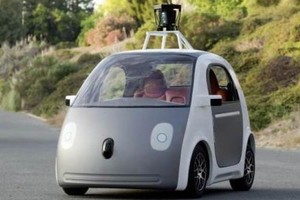

Valeo's InBlue technology will put vehicle information and a virtual key on the driver's wrist.
As a guy who hates having a heavy keychain in my pocket, Valeo's InBlue tech is the most interesting and most immediate of the two announcements. This virtual key system will allow drivers to ditch their car keys and bulky key fobs and use their smartphone or smartwatch to unlock and start their vehicle.
Valeo envisions that this tech, which will be available in the next few years, will also put remote monitoring of the vehicle's fuel level, tire pressure, mileage and service intervals, GPS location and more right on the driver's wrist. "There will be no more looking for your keys and no more looking for your car," says Valeo Senior VP of Research, Development, and Product Marketing Jean-Francois Tarabbia also stating that our smart devices are always with us and that InBlue-enabled cars will be GPS connected.
Looking a bit ahead, Valeo hopes that the driver will be able to simply walk out of their front door and automatically summon their Valet Park4U self-driving car from a nearby parking deck simply by checking their wrist. The supplier also thinks that smartphone virtual key technology will help with the spread of car sharing services, which it claims 4 out of 10 European drivers are interested in.
The Mobius concept dashboard transitions between modes for autonomous and manual driving. Valeo
Mobius, on the other hand, is much more conceptual. This dashboard is designed as a demonstration of how autonomous cars could display different information depending on whether they're under manual or machine control.
The concept starts with the now familiar fully digital instrument cluster and adds a pair of small touchscreens to the steering wheel. When the driver is in command of the vehicle, this trio of screens display a simplified interface, giving the driver access to low distraction infotainment. When the driver activates the autonomous driving mode, the displays change to a more smartphone like interface, giving the driver access to media, apps, and smartphone and tablet mirroring via HDMI or wireless display standards such as Miracast, Chromecast or Airplay.
While the car is driving itself, the driver can interact with media or even mirror apps. Valeo
In Valeo's vision, the driver will be able to watch videos or answer email while the car is negotiating a stop and go traffic jam or handling a mundane freeway cruise. I'm not 100-percent sold on the idea of watching YouTube at 70 mph, but this is just a very forward looking concept. In reality, legislation will probably keep a dashboard like Mobius from reaching production for many years to come; many years where autonomous driving tech will have time to mature and prove itself.
http://www.cnet.com/news/valeo-mobius-concept-dashboard-inblue-virtual-key-at-ces-2015/


